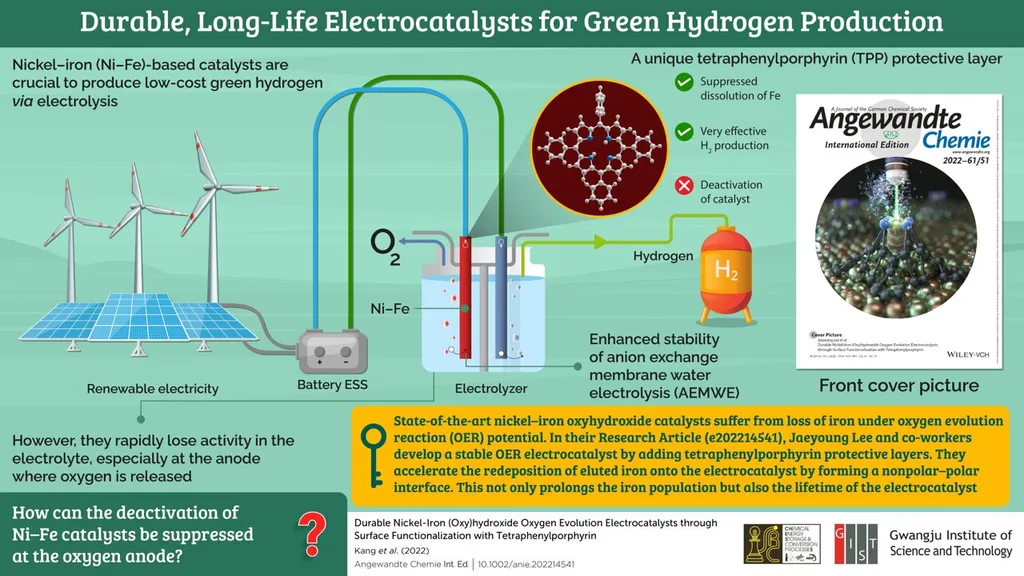In a significant stride towards sustainable energy, researchers have developed a novel catalyst that could revolutionize the process of water splitting, a critical component in hydrogen production. The study, led by Dai Zhang from the College of Physics at Donghua University in Shanghai, introduces a three-dimensional nitrogen-doped graphene/nickel–iron layered double hydroxides/tungsten-doped amorphous molybdenum sulfides (3D-NG/NiFe-LDHs/a-MoWSx) heterostructure catalyst. This catalyst leverages the synergistic effects of hydrogen spillover and vacancy engineering to enhance overall water splitting (OWS) performance, potentially paving the way for more efficient and cost-effective hydrogen production.
The catalyst’s exceptional performance is evident in its low overpotentials and robust durability at industrial-level current densities. “The overpotentials of 303 and 546 mV at 1000 mA cm⁻² for oxygen evolution reaction (OER) and hydrogen evolution reaction (HER), respectively, are remarkable,” Zhang explains. “This indicates that our catalyst can operate efficiently even at high current densities, which is crucial for industrial applications.”
The study, published in ‘Materials Today Advances’ (which translates to ‘Advanced Materials Today’), highlights the catalyst’s superior performance compared to noble metals and recently reported electrocatalysts. The theoretical investigations conducted by the researchers reveal that the internal polarization field drives hydrogen spillover, facilitating HER kinetics. Additionally, controlling the defect structure in layered double hydroxides (LDHs) is crucial for enhancing OER activity. “The optimal vacancy configuration can significantly lower the energy barrier of adjacent nickel sites,” Zhang notes, emphasizing the importance of defect engineering in catalyst design.
The implications of this research for the energy sector are profound. Hydrogen, as a clean and renewable energy source, has long been touted as a key player in the transition to a low-carbon economy. However, the high cost and low efficiency of current water-splitting technologies have been significant barriers to its widespread adoption. The development of this novel catalyst addresses both of these challenges, offering a more efficient and cost-effective solution for hydrogen production.
Moreover, the insights gained from this study could shape future developments in the field. By understanding the synergistic effects of hydrogen spillover and vacancy engineering, researchers can design more effective catalysts for various applications. “This work provides a blueprint for the rational design of highly efficient catalysts for sustainable hydrogen production via electrochemical water splitting,” Zhang concludes.
As the world continues to grapple with the challenges of climate change and energy security, innovations like this catalyst offer a glimmer of hope. By making hydrogen production more efficient and affordable, this research could accelerate the transition to a sustainable energy future, benefiting industries and consumers alike.

